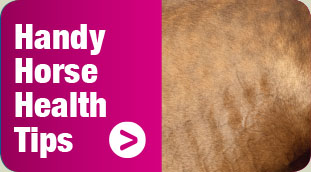- Home
Welcome to Saddleworld!
The Saddleworld Website is a showcase
of a selected range of products that are available from any Saddleworld throughout Australia.If you would like to purchase a specific product, please contact your nearest store.
Click on Our Stores to find your nearest Saddleworld Store!
- Brands
- Products
Saddleworld Products & Brands
Saddles
Bridlewear
Tack Room
Horse Boots
- Kentucky »
- Eurohunter »
- Eurohunter »
Helmets
- Our Stores
Choose your nearest store
New South Wales
Queensland
South Australia
- Evandale »
- Gawler »
- Mt Barker »
- Mt Gambier »
- Wangara »
- Devonport »
- Launceston »
Western Australia
Tasmania
- News & Tips
- Catalogues
2017 Saddleworld Product Guide Out Now!
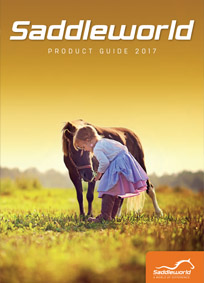
The 2017 Saddleworld Product Guide is out now.
Visit your nearest Saddleworld store and pick up your FREE copy today.
View the 2017 Product Guide Online Now!- About Us
Spring means Flowers, Foals and Founder!
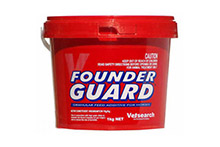
Springtime is a glorious season for horse lovers. It brings perfect days for riding and enjoying the company of our equine friends. We all love new foals and the promise of great things to come … but the abundance of spring grass also brings a very real risk of Laminitis – often known as “fat pony founder”.
Over-feeding “fat ponies” is a very common cause of Founder and spring growth, particularly after rain, means an increase of carbohydrates which can causes metabolic changes that result in an altered blood flow to the horse’s foot – in particular the lamanae.
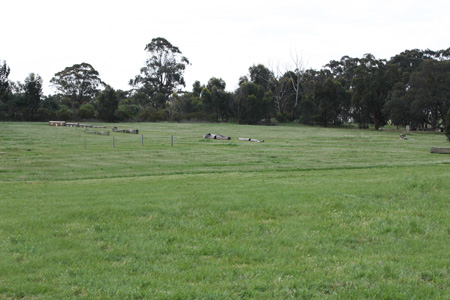
Rich Spring Grass is not always best for horses!
Laminitis is an inflammation of the sensitive lamanae of the horse’s foot. It is most commonly seen in the front feet but can affect all four feet in some cases. This problem is exacerbated by the fact that the hoof wall is hard and unyielding, leaving no way to release the pressure in an inflamed foot.
The condition is extremely painful and can lead to changes to the bone structures within the hoof, which will affect the horse/pony for the rest of its life. Even when the Laminitis has subsided, the changes to the hoof structure are permanent and will require special treatment for the rest of the horse’s life.
Laminitis can be fatal in severe cases where the vet believes there is no possibility of rehabilitation. Vets will also recommend euthanasia in cases where the horse is in extreme pain and no relief can be found. Once a horse has had an episode of laminitis, they are particularly susceptible to future episodes.
 It is not only fat ponies that are at risk and even Thoroughbreds and other breeds that hide the appearance of excess weight in a larger frame, should be monitored and precautions taken. It is important to bear in mind that too much of a good thing (i.e. spring grass) can be bad!
It is not only fat ponies that are at risk and even Thoroughbreds and other breeds that hide the appearance of excess weight in a larger frame, should be monitored and precautions taken. It is important to bear in mind that too much of a good thing (i.e. spring grass) can be bad!Laminitis can be managed but not cured, which is why prevention is so important. Prevention is by far the best way to protect your equines … and diligent care must be taken during the “at risk” months to ensure that access to rich feed is restricted or a special feed additive given to counter the effects of a high carbohydrate intake.
In the past, horse owners have locked up their “at risk” equines in a small yard where there is no grass and monitored their diet feeing only “nutrient light” grass hay. This form of management is very hard on horses as they miss their roaming and contact with other horses. A grazing muzzle is the perfect way to restrict the intake of grass, whilst allowing roaming and social contact in the paddock.
Pictured right - Zilco Grazing Muzzle
There are situations where restricting the diet is impractical or impossible and with
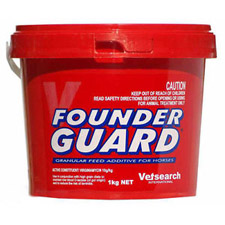 advancement in horse nutrition technologies and the development of a feed additive to counter the effects of a high grain/high carbohydrate diet, Laminitis can be effectively managed by adding a product such as “Founderguard” to the horse’s diet. It goes without saying that this course of action can only be effective is absolute adherence is given to the feeding rates and instructions for use – read the label carefully.
advancement in horse nutrition technologies and the development of a feed additive to counter the effects of a high grain/high carbohydrate diet, Laminitis can be effectively managed by adding a product such as “Founderguard” to the horse’s diet. It goes without saying that this course of action can only be effective is absolute adherence is given to the feeding rates and instructions for use – read the label carefully.Founderguard is a RED HOT special in the Saddleworld Super Spring Catalogue Sale – you can find out more HERE
You can read a very comprehensive and helpful article about Laminitis on the RSPCA site HERE












 Brands
Brands
Ammo
Eurohunter Rugs
Grazioli Boots
Kentucky Horseware
PDS Carl Hester Collection
Pessoa Saddles
Prestige Saddles
Thorowgood
Trainer’s
Sponsored Events
Saddleworld Melbourne International 3DE
Saddleworld Australian Youth Showjumping Championships
Saddleworld Brisbane CDI
PSI Dressage & Jumping with the Stars
Copyright © 2013 Saddleworld Pty Ltd.
Taking care of all your horse needs. Saddles, horse rugs, riding equipment, bridles, saddlery, clothing, veterinary supplies. All Rights Reserved.
Home | Privacy Policy | Pricing Policy | Contacts | Join - Products



